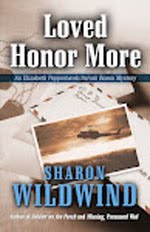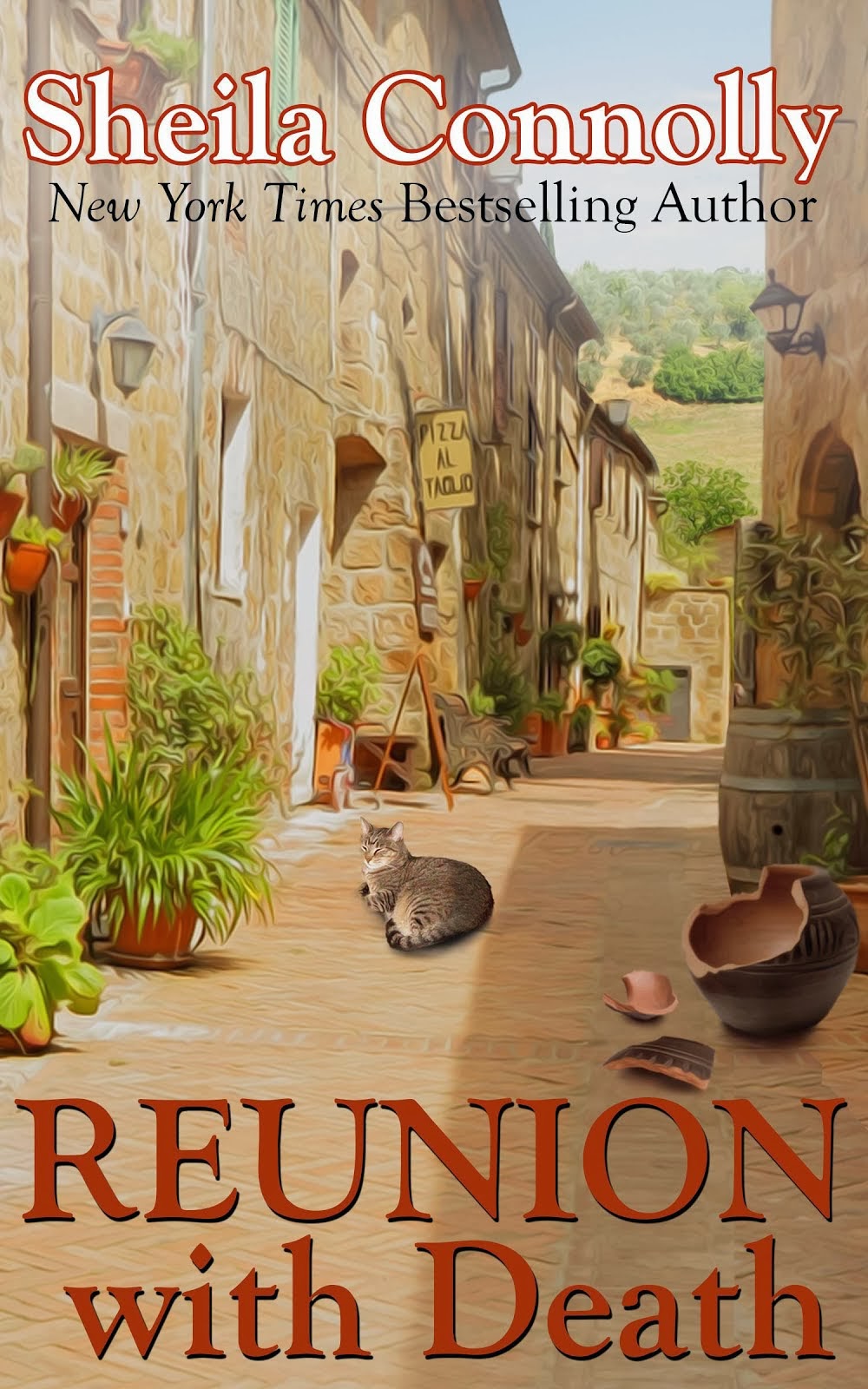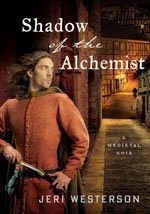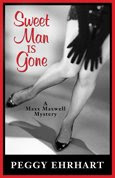
Rick Blechta (pronounced Blek’ ta) is a Canadian author, musician, and graphic artist, who successfully combines an interesting triangle of talents: writing books, designing book covers, and playing music.
PDD:
Music plays a huge part in your dual careers of writer and musician, so, for the right atmosphere for this interview, what music should the reader play in the background?
Rick:
I describe myself as a “musical mutt”. I’m not one of those people who likes only a certain type of music and I’ve played pretty well every style of music (western) by this point. So, I’ll listen to anything. I might wind up not liking it, but I can’t think of a single category of music where there isn’t at least one thing that grabs me. Now, that being said, I can be very picky as to what I listen to a second time.
Currently, I’m working on a novel where the main character is an opera singer. (Don’t worry, it won’t be musically scary. I know how a lot of people can be about this particular art form.) Consequently, I’m listening to a lot of opera, mostly works that are being mentioned in the story, so that I can be really familiar with them and not make a fool of myself saying something really stupid.
So, to answer the question, put on any music you REALLY enjoy while you’re reading this!
PDD:
Like many musicians and authors, you’ve held a variety of day jobs. You’ve described your stint as a Toronto cab driver as “hilarious.” What was so funny about driving a cab in Toronto?
Rick:
People will say and do anything in a cab. It’s as if they think the driver is deaf, dumb and blind. Even though I only drove for a year and a half, I had just about everything happen in my cab (except getting robbed).
I usually drove nights since I was rehearsing with a new band and doing radio and TV jingles which all generally happen during the day. Nightimes generally are when most of the odd things happen. Except for one time...
It had been a bad week, so I decided to work on Sunday afternoon, see if I could get those few extra dollars I needed. One of my first calls was to a house in a rather tony neighbourhood off Yonge Street near the 401. The parents were at the cottage and the kids decided to have a barbecue for their friends. One of the partygoers needed a ride home. She was 16 and not used to drinking (duh!) and she’d gotten herself completely wasted on rum. They carried her out to my cab and dumped her on the back seat, gave me her address and enough money to cover the fare. So far so good.
Of course, partway there, she threw up -- all over the place. Just great.
When I got to the address I’d been given, the house turned out to be more of a mansion up in Thornhill. Knocking on the door, it was opened by a guy no older than me (24), and I swear to God he was wearing an ascot and smoking jacket.
“Yes, what is it my man?” he asked, looking down his nose at me.
I explained that I had his sister in the cab and that she’d been sick and was pretty out of it. “She can’t really walk, so I’ll need some help getting her into the house.”
He made a disgusted face, but followed me down to the kerb. I grabbed her by the ankles and pulled her partway out of the car. When her brother didn’t offer to help, I managed to get her almost standing at which point she roused herself a bit.
Taking a step towards her brother, she threw her arms around his neck, cried out, “Oh, Bobby!” and promptly puked all over him.
I smiled and said, “Bye now. Have a great day!” got into my cab and headed downtown to the legendary Spotlight Garage, the only place I could get the interior of the cab cleaned and deodorized on a Sunday.
So much for my plans for a nice easy, Sunday shift. It took two hours to get the cab habitable again.
There are other stories but I’m saving them for a book I’d like to write someday with a protagonist who drives a cab.
PDD:
You migrated from music and teaching into writing murder and mayhem. What led you to becoming a novelist, and to focusing on mysteries with a musical twist?
Rick:
Well, having been a musician for more years than I care to mention (my teaching experience was as a band teacher in middle school), I think I can write authoritatively about music. If I don’t already know it, I certainly have musicians I can call on who do know it. So research is pretty simple -- most of the time.
The music business (being a musician, a roadie, an agent, a record exec, an orchestra manager, etc.) is something a lot of people find interesting and it provides a nice “coat hanger” on which to put my story. I try to expose readers to what it’s like to stand in front of an orchestra with a violin in your hands and be expected to play perfectly, for example. The new novel lets people know what a pain it is to cart around a set of drums, as another example.
As for becoming a novelist in the first place, I was burnt out doing music seven days a week and I wanted a creative outlet that WASN’T music. I’ve always written (reviews, articles and the like) and I also took a lot of English courses in university. Also being a natural storyteller, writing novels seemed to fill the bill creatively for me. Little did I know...
PDD:
Your sixth book,
A Case of You, was published this year by RendezVous Crime. Pardon the pun, but what makes this book sing?

Rick:
I could give a flip answer here and tell folks to buy the book and see if it does indeed sing...but I won’t.
I think one of the things that makes this book quite different from the average crime novel is that the person who is the main character eventually turns out not to be. I didn’t realize this myself until I neared the end of the first draft. Doubly interesting is that the main character doesn’t actually show up in the story in “real time” until very near the end. You always hear about her through other characters.
When she does finally walk onstage, many readers have told me they’ve found her to be exceptionally intriguing.
PDD:
You’ve been extensively involved in Crime Writers of Canada, and have received CWC’s Derrick Murdoch Award in recognition of your contribution to that organization. In this day of world-wide electronic social networking—in all its guises—how are the roles of traditional writers’ organizations changing? What are the benefits of belonging to an organization?
Rick:
The roles of organization like CWC are not changing, and I don’t see any change in the near future. Our primary job is to help promote our members’ works to a wider audience and that job is still very much ongoing and still very challenging. Arts in general are under attack in this country and book publishing is especially fragile. Our whole industry combined doesn’t have the clout one of the American giants has and it is very hard for most Canadian writers to become known to a wider audience. That’s where groups like CWC can step in to help.
The benefits of belonging to CWC are obvious. First and foremost, we speak louder with a unified voice. The government has actually asked our opinion on occasion. Next, there’s networking. I got picked up by McClelland & Stewart on the recommendation of a CWC member. I wouldn’t have known this person if I hadn’t belonged to CWC, that’s for sure. Those are just two examples off the top of my head.
PDD:
You and your good friend, photographer Andre Leduc, have collaborated on covers for your books. You’re quoted as saying that the cover for
Cemetery of the Nameless went through 48 revisions before you found an image that satisfied you. If an author is fortunate enough to have input into a cover, what are the most important things she needs to know about graphic design and about covers?

Rick:
Actually, my current day job is working in a graphic design studio. While I don’t have an art background, I do know printing and both my parents were fine artists (and my dad was also trained as a graphic artist). I have also worked on a number of book covers for various publishers and projects, so, I can put up a pretty strong case for executing the covers for my own books. It doesn’t hurt that the publisher is going to get a free cover design -- except for Andre’s photo fee.
A book cover has only three components: the title, the author’s name and some sort of image. Sounds simple, right? Well, it’s not. The only thing easy about book covers is designing a bad one. You really do need to know a fair bit about typography and also how ink goes on paper. I think of covers as being posters for the book and have that at the front of my mind ALWAYS.
Most publishers don’t want their authors to get anywhere near the cover design, and there are some good reasons for that: most authors don’t have a clue about what makes a good cover and they don’t know marketing. Where the system sort of falls apart is that cover designers seldom get more than a quick briefing, usually from the book’s editor, so you really have too little information to work with really effectively. I always ask for the complete manuscript. It also helps to get the author to describe what they are trying to say between those pages. You can get some seriously good leads there!
The big thing is deciding how you’re trying to sell the book. Will the cover image involve the ‘sizzle’ or the ‘steak’? What typefaces would assist in communicating this? Then you have to make these REALLY scannable by the eye -- at a distance -- and that can involve tweaking the type, where it’s positioned over the image, colour values between type and image so that one doesn’t blend into the other, etc, etc. There really are a lot of things to consider. The problem with the design of the cover for
Cemetery of the Nameless was that the image Andre and I composed (it is a montage of five different photos, each manipulated very heavily) broke nearly every “rule” for book covers and that involved colour, clarity and how to work the book’s title into the mix. We wound up using the 43rd version. The fact that we did another 5 after that shows how confident we were that we’d gotten it right. Hindsight shows that we were right with our choice, though. Booksellers
loved it, and most stores had it faced on the shelves rather than spine in. But the 45th and 46th were also really good...
My best suggestion is for any author who wants to get involved in the design aspects of their books to do a lot of studying. I’ve looked at thousands of covers, talked to lots of terrific designers and asked people browsing in bookstores why they just picked up a particular book. The answers are usually, “The cover looked really interesting.” That’s what I try to do when I design a book cover: make it something interesting, a little out of the ordinary that looks great and is readable from 20 feet away.
For more information on Rick, his books (and book covers), and his music, visit
http://rickblechta.com/index.htm---
Next month, Canada Calling visits mystery writer R. J. Harlick, who has a colorful take on living in Canada's north.











































